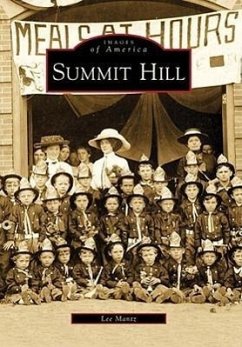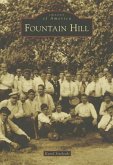While walking along the top of Sharp Mountain in 1791, Philip Ginder kicked up a piece of black stone that turned out to be anthracite coal. This discovery paved the way for a million-dollar coal industry that thrived for more than a century and spawned the birth of Summit Hill. In early 1827, a nine-mile stretch of the Switchback Gravity Railroad was built for the purpose of hauling coal from Summit Hill to the Lehigh River in Mauch Chunk. By the end of the century, the Switchback was the number two tourist attraction in America, second only to Niagara Falls. Many of the early buildings are no longer standing, but thanks to postcards and photographers of the time, many images of Summit Hill's lost places have been preserved.
Hinweis: Dieser Artikel kann nur an eine deutsche Lieferadresse ausgeliefert werden.
Hinweis: Dieser Artikel kann nur an eine deutsche Lieferadresse ausgeliefert werden.








